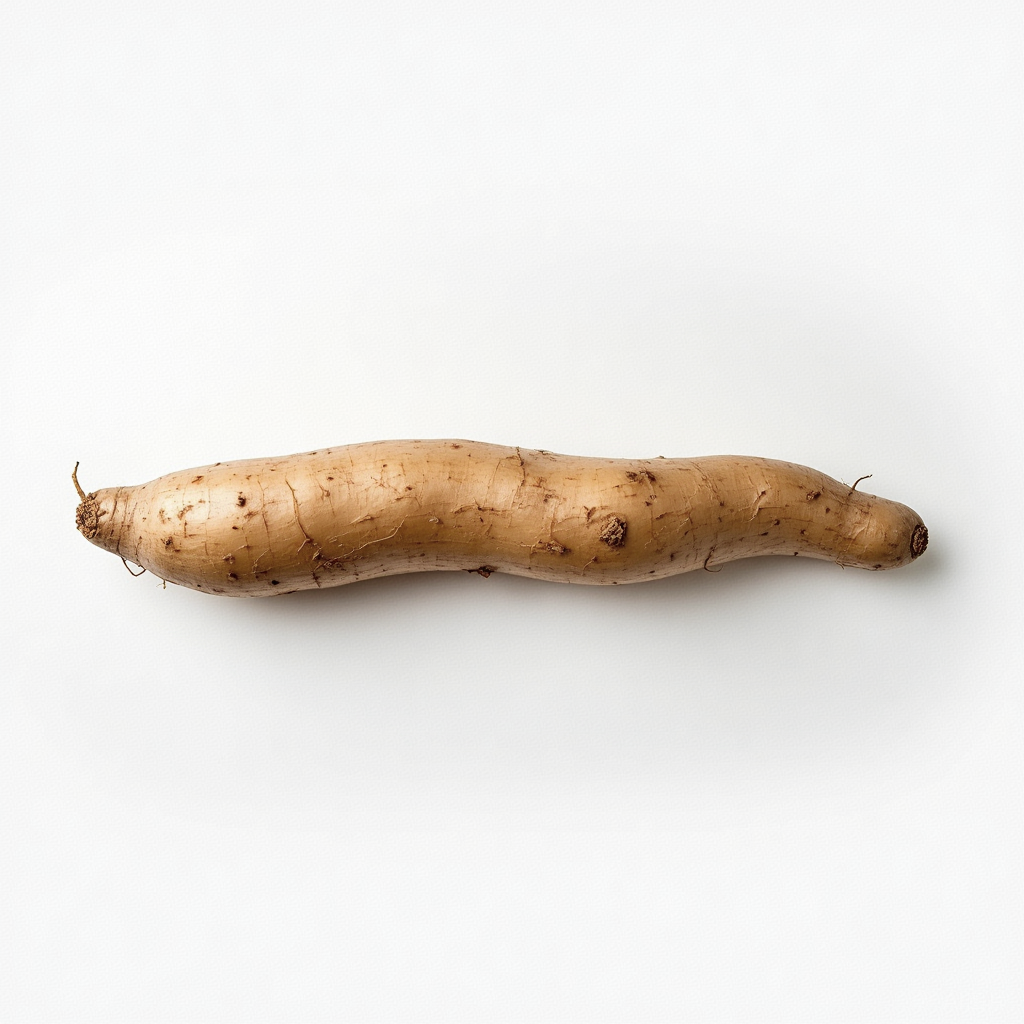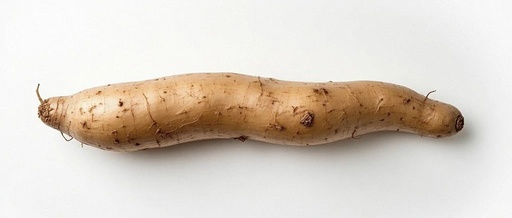Spring brings forth all things, making it the golden period for liver nourishment. As spring returns to the earth, yang energy rises. The classic TCM text, “Huangdi Neijing,” states: “In the three months of spring, this is called the time of emergence; heaven and earth are born together, and all things flourish.” Spring corresponds to the wood element, which is associated with the liver in the human body. The liver governs the smooth flow of qi and stores blood, and at this time, nurturing the liver in accordance with natural laws not only enhances immunity but also lays the foundation for health throughout the year. However, the windy and humid climate of spring can easily lead to liver qi stagnation and spleen deficiency with dampness. Therefore, TCM emphasizes the need to “soothe the liver, strengthen the spleen, and eliminate dampness to protect yang” during spring. A bowl of “Three White Congee,” which combines yam, poria, and job’s tears, has become a wise choice for seasonal health maintenance. 1. Health Risks Behind Spring Fatigue and Dampness Modern individuals, due to prolonged sitting and greasy diets, are already prone to internal dampness. With increased rainfall in spring, external dampness combines with internal dampness, often manifesting as a heavy head, fatigue in the limbs, poor appetite, and a thick, greasy tongue coating. TCM believes that “dampness is sticky”; dampness obstructing the spleen can hinder the flow of qi and blood, further affecting the liver’s ability to regulate, creating a vicious cycle of “liver qi stagnation and spleen deficiency.” If not addressed, this may develop into chronic fatigue, metabolic disorders, or even fatty liver disease. At this time, gentle dietary therapy to eliminate dampness and harmonize the liver and spleen becomes key to spring health maintenance. 2. Three White Congee: A Millennia-Old Wisdom of Food as Medicine The “Three Whites” ingredients—yam, poria, and job’s tears—may seem ordinary, but they embody the exquisite pairing of TCM’s “food and medicine share the same source.” These three white foods enter the lungs but work synergistically on the liver, spleen, and kidneys, forming a golden triangle of “strengthening the spleen, eliminating dampness, and nurturing the foundation.” 1. Yam: The “Immortal Food” that Nourishes the Spleen and Stomach The “Shennong Bencao Jing” lists yam as a superior herb, stating it “tonifies the middle, benefits qi, and strengthens muscles; long-term consumption sharpens the senses.” It is neutral in nature and sweet in flavor, entering the spleen, lung, and kidney meridians. Rich in mucilage proteins and amylase, it can repair the gastric mucosa and promote digestion. In spring, when the liver is strong and can easily damage the spleen, yam’s ability to “nourish the spleen and stomach” builds the first line of defense against dampness. 2. Poria: The “Four Seasons Divine Medicine” for Promoting Water and Draining Dampness Poria grows beneath pine roots, absorbing the rich earth energy, and is praised in the “Bencao Gangmu” as a “sacred product for eliminating dampness.” It is neutral in nature and bland in flavor, promoting urination without harming the body’s qi, especially adept at resolving stubborn phlegm-dampness caused by spleen deficiency. Modern research has found that poria polysaccharides can regulate the immune system, complementing yam’s tonifying effects. 3. Job’s Tears: The “Life and Health Grain” that Clears Heat and Drains Dampness Job’s tears (Coix lacryma-jobi) are slightly cold in nature and enter the spleen, stomach, and lung meridians, with effects of promoting urination, reducing swelling, strengthening the spleen, eliminating dampness, and clearing heat and pus. Its high dietary fiber content promotes intestinal peristalsis, and when paired with poria, it accelerates dampness metabolism. Note that individuals with a cold constitution should first roast job’s tears to reduce their cold nature. 3. The “Add and Subtract” Method of Three White Congee: A Personalized Health Code While the basic formula is good, adjustments should be made according to individual constitution. TCM emphasizes syndrome differentiation in dietary therapy, and the Three White Congee can be adjusted according to symptoms: – For those with obvious qi deficiency: Add 10 grams of Huang Qi (Astragalus) to enhance qi tonification and yang raising effects. – For those with blood deficiency: Pair with 5 red dates and 6 longans to nourish blood and calm the spirit. – For those with excess damp-heat: Add 20 grams of red beans to enhance heat-clearing and damp-draining effects. – For children: A small amount of honey can be added to improve palatability. Key Preparation Points: 1. Soak job’s tears and poria for 2 hours in advance to shorten cooking time. 2. Choose iron stick yam, peel it, and quickly soak it in vinegar to prevent oxidation. 3. Simmer on low heat for 40 minutes until the congee is thick and smooth, then turn off the heat. 4. Consume warm for breakfast daily, with better results after 2-3 weeks of continuous use. 4. Collaborative Strategies for Spring Liver Nourishment While Three White Congee is beneficial, it should be combined with an overall lifestyle approach: – Rise early at the time of the rabbit (5-7 AM) to stretch the liver qi: During this time, the large intestine meridian is active. Walking and practicing the “Ba Duan Jin” exercise “to regulate the spleen and stomach” can help promote yang energy. – Emotional regulation to avoid stagnation: The liver prefers smoothness; in spring, wear loose clothing, enjoy flowers, and avoid emotional repression. – Acupoint health care, balancing internal and external: Daily massage of the Tai Chong point (the depression behind the first metatarsal) and Yin Ling Quan point (the depression below the inner condyle of the tibia) for 3 minutes each can effectively soothe the liver and strengthen the spleen. Conclusion From the “Shang Han Lun” stating, “When seeing liver disease, know that the liver transmits to the spleen; one must first strengthen the spleen,” to modern nutritional theories on dietary fiber, Three White Congee has thrived for millennia, confirming TCM’s forward-thinking wisdom of “preventing disease before it occurs.” This spring, consider making a simple bowl of Three White Congee a regular on your dining table, and in the fragrant rice aroma, reap the rewards of liver and spleen harmony and a light, healthy body this spring.
1. Health Risks Behind Spring Fatigue and Dampness Modern individuals, due to prolonged sitting and greasy diets, are already prone to internal dampness. With increased rainfall in spring, external dampness combines with internal dampness, often manifesting as a heavy head, fatigue in the limbs, poor appetite, and a thick, greasy tongue coating. TCM believes that “dampness is sticky”; dampness obstructing the spleen can hinder the flow of qi and blood, further affecting the liver’s ability to regulate, creating a vicious cycle of “liver qi stagnation and spleen deficiency.” If not addressed, this may develop into chronic fatigue, metabolic disorders, or even fatty liver disease. At this time, gentle dietary therapy to eliminate dampness and harmonize the liver and spleen becomes key to spring health maintenance. 2. Three White Congee: A Millennia-Old Wisdom of Food as Medicine The “Three Whites” ingredients—yam, poria, and job’s tears—may seem ordinary, but they embody the exquisite pairing of TCM’s “food and medicine share the same source.” These three white foods enter the lungs but work synergistically on the liver, spleen, and kidneys, forming a golden triangle of “strengthening the spleen, eliminating dampness, and nurturing the foundation.” 1. Yam: The “Immortal Food” that Nourishes the Spleen and Stomach The “Shennong Bencao Jing” lists yam as a superior herb, stating it “tonifies the middle, benefits qi, and strengthens muscles; long-term consumption sharpens the senses.” It is neutral in nature and sweet in flavor, entering the spleen, lung, and kidney meridians. Rich in mucilage proteins and amylase, it can repair the gastric mucosa and promote digestion. In spring, when the liver is strong and can easily damage the spleen, yam’s ability to “nourish the spleen and stomach” builds the first line of defense against dampness. 2. Poria: The “Four Seasons Divine Medicine” for Promoting Water and Draining Dampness Poria grows beneath pine roots, absorbing the rich earth energy, and is praised in the “Bencao Gangmu” as a “sacred product for eliminating dampness.” It is neutral in nature and bland in flavor, promoting urination without harming the body’s qi, especially adept at resolving stubborn phlegm-dampness caused by spleen deficiency. Modern research has found that poria polysaccharides can regulate the immune system, complementing yam’s tonifying effects. 3. Job’s Tears: The “Life and Health Grain” that Clears Heat and Drains Dampness Job’s tears (Coix lacryma-jobi) are slightly cold in nature and enter the spleen, stomach, and lung meridians, with effects of promoting urination, reducing swelling, strengthening the spleen, eliminating dampness, and clearing heat and pus. Its high dietary fiber content promotes intestinal peristalsis, and when paired with poria, it accelerates dampness metabolism. Note that individuals with a cold constitution should first roast job’s tears to reduce their cold nature. 3. The “Add and Subtract” Method of Three White Congee: A Personalized Health Code While the basic formula is good, adjustments should be made according to individual constitution. TCM emphasizes syndrome differentiation in dietary therapy, and the Three White Congee can be adjusted according to symptoms: – For those with obvious qi deficiency: Add 10 grams of Huang Qi (Astragalus) to enhance qi tonification and yang raising effects. – For those with blood deficiency: Pair with 5 red dates and 6 longans to nourish blood and calm the spirit. – For those with excess damp-heat: Add 20 grams of red beans to enhance heat-clearing and damp-draining effects. – For children: A small amount of honey can be added to improve palatability. Key Preparation Points: 1. Soak job’s tears and poria for 2 hours in advance to shorten cooking time. 2. Choose iron stick yam, peel it, and quickly soak it in vinegar to prevent oxidation. 3. Simmer on low heat for 40 minutes until the congee is thick and smooth, then turn off the heat. 4. Consume warm for breakfast daily, with better results after 2-3 weeks of continuous use. 4. Collaborative Strategies for Spring Liver Nourishment While Three White Congee is beneficial, it should be combined with an overall lifestyle approach: – Rise early at the time of the rabbit (5-7 AM) to stretch the liver qi: During this time, the large intestine meridian is active. Walking and practicing the “Ba Duan Jin” exercise “to regulate the spleen and stomach” can help promote yang energy. – Emotional regulation to avoid stagnation: The liver prefers smoothness; in spring, wear loose clothing, enjoy flowers, and avoid emotional repression. – Acupoint health care, balancing internal and external: Daily massage of the Tai Chong point (the depression behind the first metatarsal) and Yin Ling Quan point (the depression below the inner condyle of the tibia) for 3 minutes each can effectively soothe the liver and strengthen the spleen. Conclusion From the “Shang Han Lun” stating, “When seeing liver disease, know that the liver transmits to the spleen; one must first strengthen the spleen,” to modern nutritional theories on dietary fiber, Three White Congee has thrived for millennia, confirming TCM’s forward-thinking wisdom of “preventing disease before it occurs.” This spring, consider making a simple bowl of Three White Congee a regular on your dining table, and in the fragrant rice aroma, reap the rewards of liver and spleen harmony and a light, healthy body this spring.

